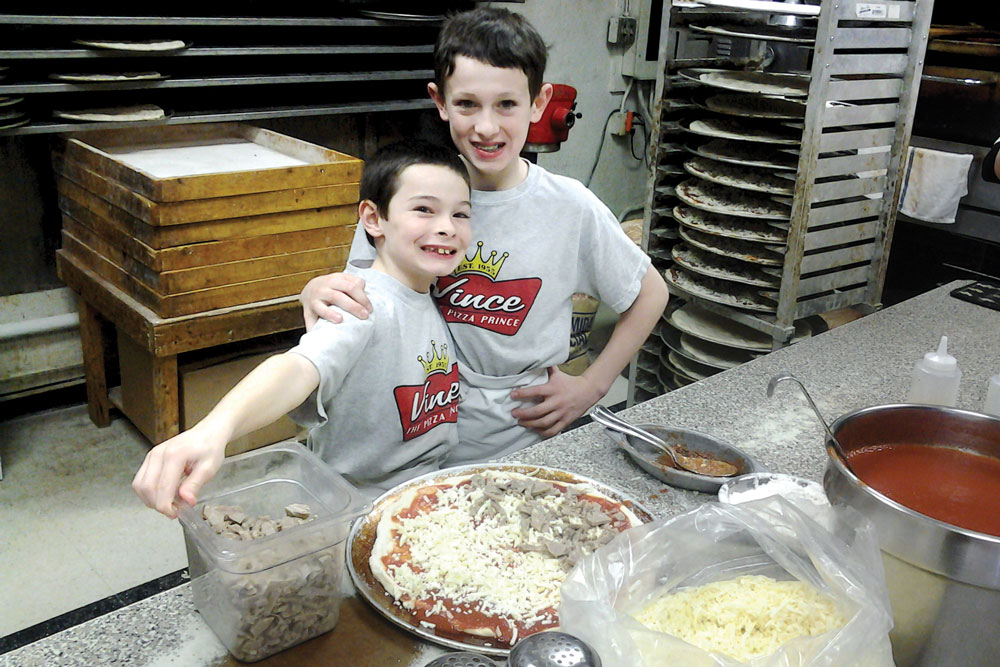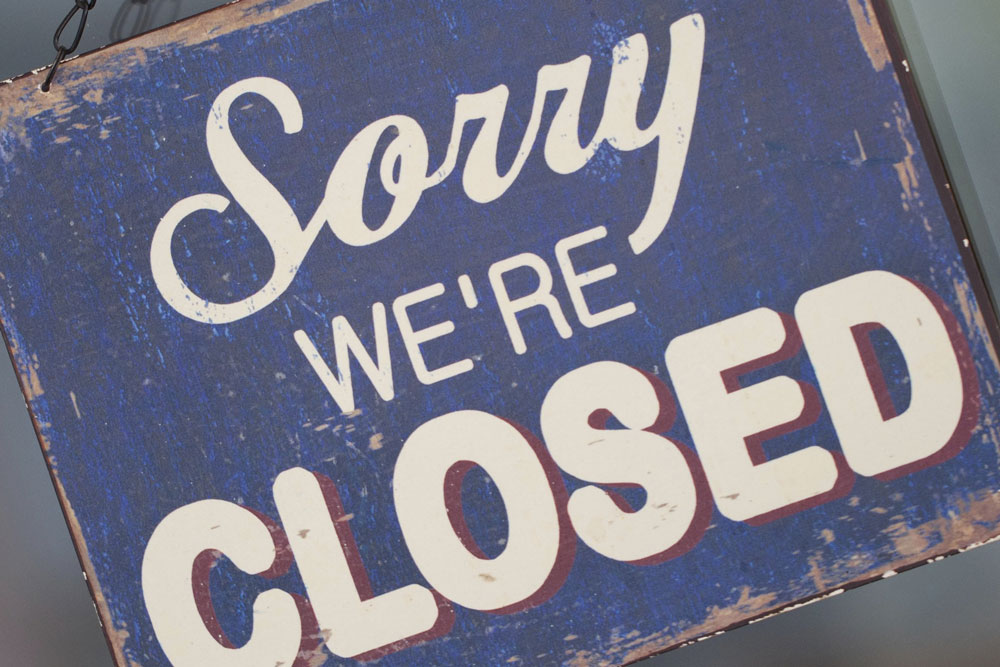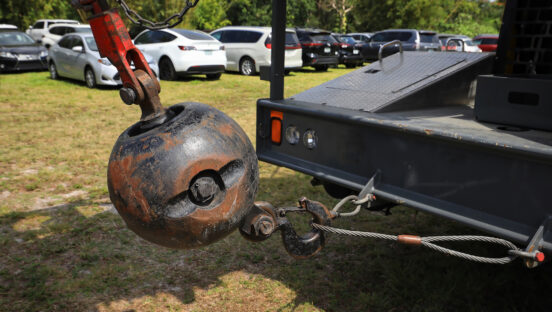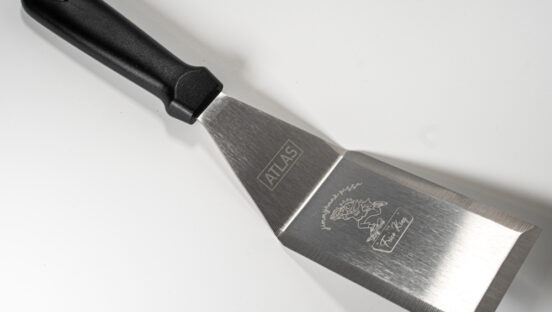Ask an experienced operator for advice on starting out in the pizza industry, and a common response is, “Don’t do it!” Between the long hours, rising costs and ever-increasing competition, this industry can be as unforgiving as it is rewarding. Even those who jump into pizzeria ownership with great ideas, solid business plans and detailed projections can find that slipping up in just one area—such as operations or debt management—can lead to the downfall of a business.
Why do some pizzerias, including the good ones, fail? It’s more complicated than you might think. Read on for the stories of five operators who faced closure and find out where they went wrong so that you can avoid similar mistakes.
Case Study #1: A Matter of Debt
Andrew Ellis, owner of Great Lakes Pizza Company (greatlakespizzacompany.net) in Levonia, Michigan, just opened his doors one year ago, but this wasn’t his first foray into ownership. After building a solid industry background through various positions at Domino’s (dominos.com) over nine years, he decided to open an independent store, Andrew’s Hometown Pizza in Lansing, Michigan. “We stayed open just shy of one year,” Ellis says. “Overall, we were very strong in operations, had solid marketing, offered good price points and delivery service, and experienced nice sales and decent volume (about $8,000 per week).”
Unfortunately, Ellis also spent too much up front—and borrowed too much. With so many payments, he couldn’t get out from under debt, and there were several expenses he didn’t account for. “There’s a distinction in what it costs to get the doors open and what it costs to get going, and I didn’t correctly forecast the process of becoming profitable,” he explains. “Things you didn’t know about add up, and, when you’re on a tight budget, everything is magnified.” For example, food costs were initially higher after opening, so halfway through the year Ellis made adjustments to bring them in line with original estimates. For his new store, he says, he made those necessary changes in the first month or two.
Ellis also notes that he didn’t account for his own time. All of the tasks he committed to doing “far exceeded what one person was capable of doing in a day,” he says. “I learned I can’t be all things to my business, that I have to delegate and account for the money it takes for other people to learn and perform those tasks.”
But Ellis believes that lessons from his first venture have made his current pizzeria run more smoothly. This time, he bought and paid for everything up-front, without loans or liens, creating priceless “relief and peace,” he says. He’s also starting out with shorter hours so he doesn’t burn the candle at both ends. “The reasons I failed were all on me—they were my mistakes, and there was a learning curve,” Ellis concludes. “But I really love this business, and when I was away from it, I realized how much I enjoy it. I’m excited as can be to [be back in the pizza industry].”
Case Study #2: Profitability Pitfalls
Thirteen years ago, Scott Hack and a business partner opened Fast Break Pizza in Crestwood, Kentucky, a suburb of Louisville, and kept it running for about five and a half years. “We weren’t a flash in the pan, but we never really got to the place where the business was self-sustaining,” recalls Hack, who went on to co-found Bracketpress.com, an online pool manager for the NCAA March Madness tournament. “Either I or my business partner was always there because we never had a strong management team in place. And though we did OK for a bit, the profit wasn’t there.”
Hack believes his top two issues were “shiny objects” and debt management. He committed to a major purchase when he bought a top-notch POS system, but its bells and whistles never gave him the ROI he’d hoped for. Hack thinks a cheaper and more basic system would have done the job, and the POS added to company debt at a time when the lease was increasing. “We spent six months researching POS systems to make the best decision—looking at the numbers, what sales the system could bring in and what money we’d save,” Hack says. “But we didn’t take into account the lease increase and then budget in that cost—plus, seven years ago, the economy wasn’t great.”
Additionally, Hack believes, Fast Break didn’t cater enough to families. Now, as a married father, his view of the dining experience is “drastically different,” he says. “You need good parking and accessibility. We didn’t have booths. We had a bar. Simple things like that—it never dawned on me how they affected the customer experience.”
In 2008, Hack and his partner sold the shop to a regular customer, but it wasn’t a distressed sale, thanks in part to a solid menu and marketing plan. They’d also made an impactful change in the last year of business: altering hours of operation. “Because we had dine-in, delivery and a full bar, we were open a lot,” Hack notes. “But when we looked hard at sales numbers, we decided on shorter hours and stopped weekday lunch because sales didn’t support it. When you’re just starting out, don’t be in a hurry to expand your hours; work up to more hours only when you’re meeting current sales goals.”
 |
|
After overspending and overbuilding, Nick’s Pizza Pub, owned by Nick Sarillo (center), faced closure in 2011, but the community rallied to save him. He has since clamped down on his food, beverage and labor costs and makes sure to tap into the creativity of his entire staff. |
Case Study #3: The Close Call
In late 2011, Nick Sarillo, founder and CEO/president of Nick’s Pizza Pub (nickspizzaandpub.com), with two locations in Elgin and Crystal Lake, Illinois, was desperate to improve his business. Faced with almost certain closure after 16 years, he wrote a letter and sent it to the 16,000-plus customers on his email list. He wanted them to understand what went wrong and explained the issues with unusual candor. “We overbuilt and overspent, and then we didn’t cut fast enough or hard enough when sales started to go downhill,” Sarillo wrote. “The issue is primarily with our Elgin restaurant, but because we are one company, the failure of Elgin will likely impact Crystal Lake as well….We do bring in a lot of revenue, but unfortunately that is not enough to cover our mortgage and the other expenses that accrue from having such large facilities.”
In 2008, sales at the Elgin location began to drop, and the pizzeria was bleeding money, Sarillo explained in the letter. “Fortunately, Crystal Lake was profitable enough to cover both restaurants most of the time. As of this year, that’s no longer true. The sales drop in Elgin alone has been 30% since last year and close to 40% since 2007, thanks largely to the bad economy and our location next to the road construction….Unfortunately, the bills that we have been pushing back this year are catching up with us now….Barring some sort of miracle, we are going to run out of cash to pay our vendors and team members over the next couple of weeks and will have to close.”
Within a half hour, the letter went viral, Sarillo recalls, and Nick’s received hundreds of supportive calls and emails. More importantly, sales for the week doubled (a $50,000 increase in each of the two restaurants), allowing the company to survive. “We very well could’ve been out of business if not for all of that community support,” he admits.
Sarillo acknowledges he didn’t keep a close enough eye on the balance sheet; no one was paying attention to the company’s amount of debt, which became a “huge burden” when sales dropped, he says. “We weren’t prepared to handle the change in economic climate and the road construction project, and that lack of awareness led to a deep hole.”
Now Nick’s is back in the black, and changes have been made to ensure the business stays that way. Sarillo shares numbers with everyone on the team and keeps them involved with sales, costs and profitability. Each week, a fiscal huddle requires all staff members to review the balance sheet, while a separate weekly huddle for staff executives assesses the overall company. “With this process, we were able to get tighter with food and beverage costs—and with labor, which made the biggest difference,” Sarillo notes. “We also include staff in our marketing, and the team thinks of ideas I never would have. The process we have in place allows us to tap into the creativity of the entire team—using a hundred minds instead of a couple—and I’m astounded by the ideas they come up with. Everyone at Nick’s is a business owner.”
Case Study #4: A Snowball Effect
Even operators who are highly experienced in running a successful operation can make mistakes, as happened to the husband-and-wife owners of Vince the Pizza Prince (vincethepizzaprince.net) in Scranton, Pennsylvania. Vince Cianfichi’s father started this pizzeria in the 1950s, and it’s still going strong—but the opening of a second location in 2004 was rife with challenges from the get-go.
The new location featured a castle theme, but cracks soon showed in the royal facade: Construction bids were triple what the Cianfichis expected. Despite nearly half a million dollars sunk into the building, construction was done poorly, complete with a leaking roof. The castle-like environment dictated 20’-high ceilings that generated massive heating bills in winter. “You have to look at the numbers and think about how many hours you have to be open to pay the bills,” says Rhea, Vince’s wife. “Payroll especially will kill you if you don’t know your rent, lease or mortgage costs—because between hourly pay, unemployment, insurance, Medicare and Social Security, you pay $1.25 for every dollar an employee makes. With even 15 employees, each working 30 to 40 hours a week, that adds up.”
The second location had a liquor license, but with a convenience store down the street selling beer for 25% less, takeout customers (and even dining-in families) rarely ordered brews. Meanwhile, Vince regrets hiring less-than-dedicated managers who didn’t share his vision for a fast-casual operation. “I didn’t have managers sold on the idea and on how the business should run and feel, which was a killer for us,” he says.
Then the property’s landowner sold a parcel for a Dunkin’ Donuts to open up, taking away 60% of the castle’s visibility. “We chose this location because it was high-traffic, but the traffic light in front of our plaza killed us, because people couldn’t get in and out easily,” Vince recalls. “What we thought was a fabulous location turned out to be a dud. And little things eroded us—like our location on a flood plain. Twice we had foot-deep water in front of the store.”
With issues big and small adding up, the Cianfichis decided to close the location after about three years. “If I could do it again, I would have spent less on a smaller place. I bit off a little more than I could chew, and if you can’t control your operation, it’s doomed,” Vince says. “If the building were a third of the size and a mile away, we might still be open.”
 |
|
The original location of family-run Vince the Pizza Prince is still going strong in Scranton, Pennsylvania, but everything that could go wrong did go wrong when the Cianfichis opened a second store in 2004. |
Case Study #5: A Small Pond
Nick Sasso and his wife, Kimberli, predicted growth for their small town of Grantville, Georgia, when they opened shop in 2004—and for a while, that prediction panned out: Nick’s Pizzeria experienced 20% annual growth in each of the first four years. “We put a substantial amount of money back into the business, but we had too lean of a margin for our small market,” Sasso says. “We probably failed at the outset with our location.”
After the economy tanked in 2008, the customer base started dwindling, and the previous years’ growth vanished. Without enough protection in the form of more capital or credit reserves, the business was vulnerable, and Sasso made the tough decision to close in 2012. “We did most everything else right, but we gambled too much,” Sasso says. “We expected everything to grow as it had the first four years.”
Even today, the town’s population continues to shrink from its height of 3,200, and Sasso regrets trying to invest in a community faced with disadvantageous demographics (i.e., many people on disability, retired or unemployed). “We didn’t want to bail out of a depressed town because we live there, so at times we weren’t objective enough,” he admits. “If I did it over again, I’d probably make a different choice—after all, this is a business, and our choices cost us in the long run.”













